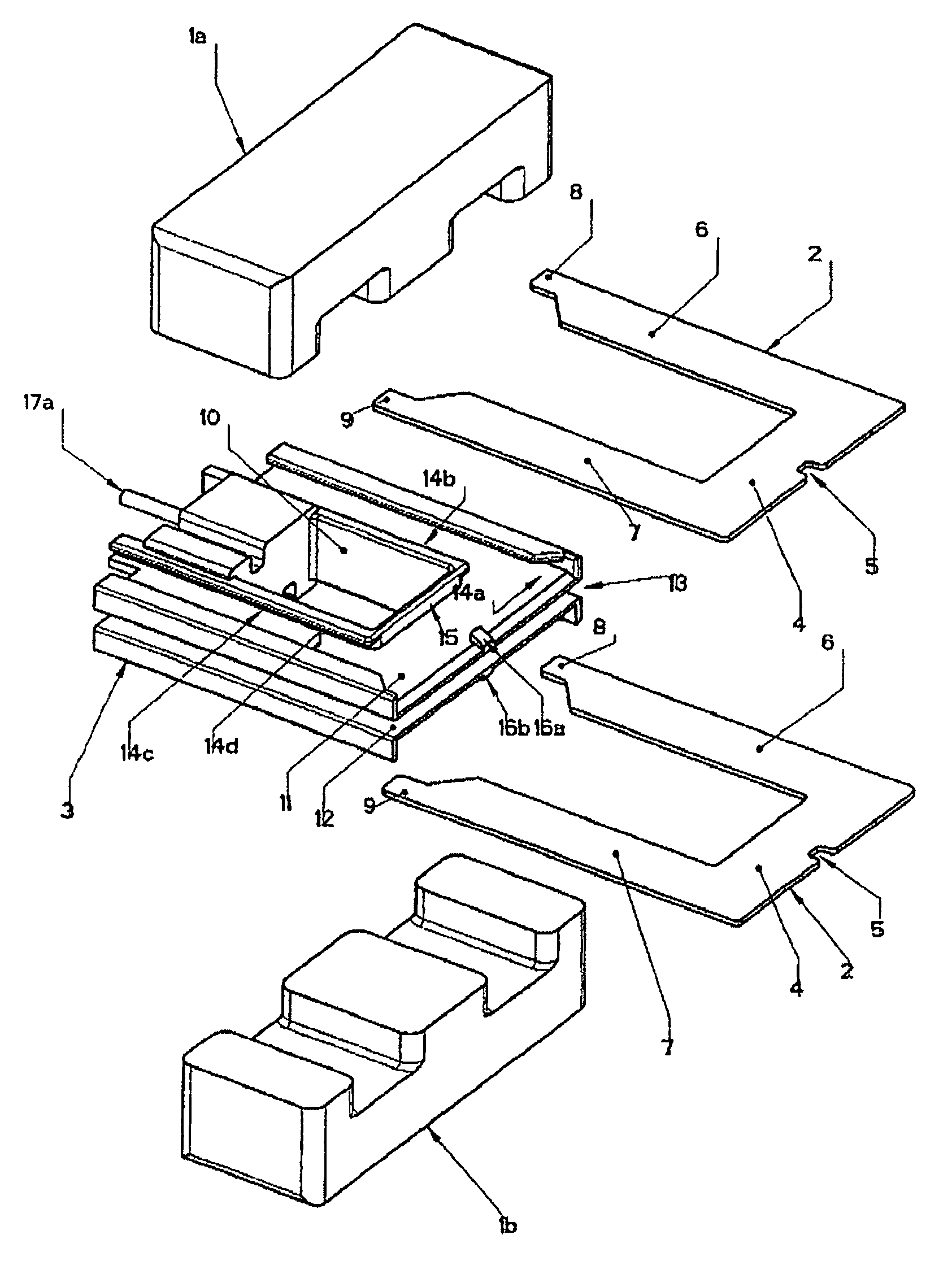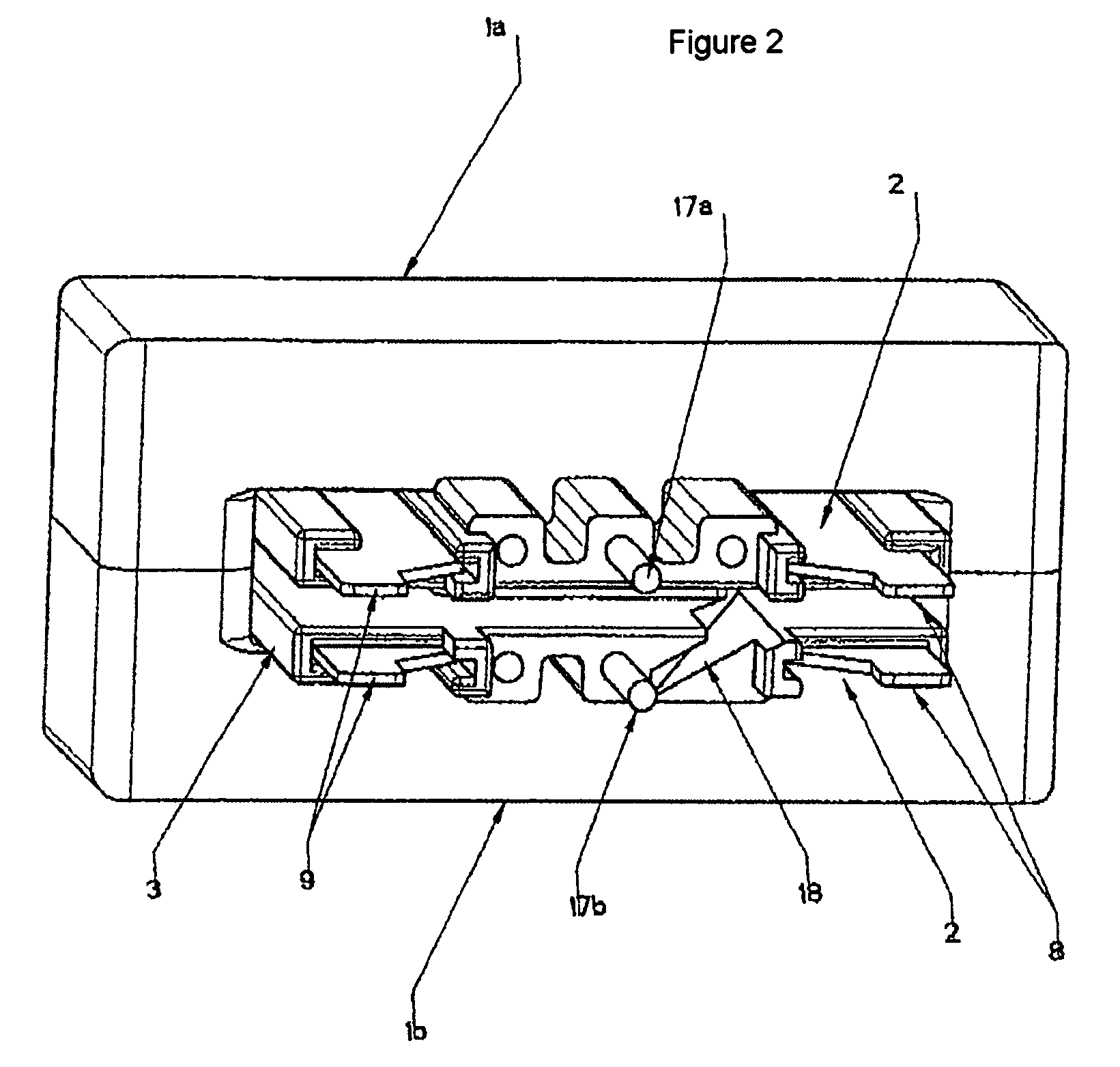Planar transformer comprising plug-in secondary windings
- Summary
- Abstract
- Description
- Claims
- Application Information
AI Technical Summary
Benefits of technology
Problems solved by technology
Method used
Image
Examples
Embodiment Construction
[0035]FIG. 1 shows essential components of an exemplary embodiment of the planar transformer according to the invention, to be specific a three-leg ferrite core comprising two halves 1a, 1b, two winding sheets 2 forming a secondary coil, and a coil former 3. The primary winding is not shown for the sake of a clearer overview.
[0036]The winding sheets 2 consist of a conductor material and are preferably punched out or eroded from a copper sheet and are tin-plated. They have an essentially U-shaped profile, that is to say they are open to one side. The upper cross-piece 4 of the U-shaped profile has at the center of the outer edge a small, essentially rectangular notch 5. Both ends of the cross-piece are adjoined by free legs 6, 7.
[0037]The thickness of the winding sheets 2 is small in comparison with the width of their cross-pieces 4 and of the legs 6, 7. The width of a predominant part of the legs 6, 7 corresponds essentially to the width of the cross-piece 4 in the region of the not...
PUM
 Login to View More
Login to View More Abstract
Description
Claims
Application Information
 Login to View More
Login to View More - R&D
- Intellectual Property
- Life Sciences
- Materials
- Tech Scout
- Unparalleled Data Quality
- Higher Quality Content
- 60% Fewer Hallucinations
Browse by: Latest US Patents, China's latest patents, Technical Efficacy Thesaurus, Application Domain, Technology Topic, Popular Technical Reports.
© 2025 PatSnap. All rights reserved.Legal|Privacy policy|Modern Slavery Act Transparency Statement|Sitemap|About US| Contact US: help@patsnap.com



